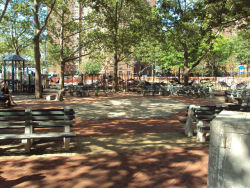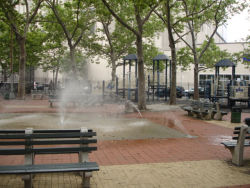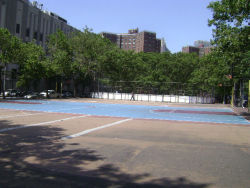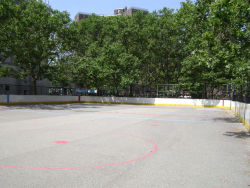Tanahey Playground
Martin F. Tanahey Playground
What was here before?
Prior to colonization, this area of Manhattan’s waterfront was part of the original shoreline of the East River with the border being along Water, Cherry and Front Streets. In the 17th century, European settlers established trade routes along the East River that became crucial to New York’s economy. Landfill and the construction of piers, docks, and wharves in the 19th century extended the shoreline to South Street, where it exists today.
After the decline of the area’s shipping industry, the Lower East Side became overpopulated with poor living conditions in tenement housing. They were torn down in the early 20th century and redeveloped with large-scale housing projects.
How did this site become a playground?
This land was acquired through condemnation in 1949 and opened as a playground on October 11, 1952 as Martin F. Tanahey Playground. It was the third recreational facility constructed for the residents in the Governor Alfred E. Smith Houses, which were built at Smith’s birthplace at 174 South Street.
In 1972, a 10-foot-wide strip of land was taken from the park to widen Water Street. The playground was later extended into Catherine Slip in 2011. Originally, the Market and Catherine Slip sides were constructed as sitting areas and the center was reserved for active recreation. The playground continues to maintain distinct sections with basketball courts, soccer fields, and a playground with a sitting area.
Who is this playground named for?
Local civic and political leader Martin F. Tanahey (1874-1930) was born and raised in this Lower East Side neighborhood. Tanahey held various public offices over 22 years, including chief clerk in the State of New York Labor Department, assistant appraiser of the Port of New York, and assistant government appraiser under President Woodrow Wilson. He was elected to the Board of Alderman from District 1 in 1922 and remained an alderman until his death from pneumonia in 1930.
Check out your park's Vital Signs
Clean & Safe
Green & Resilient
Empowered & Engaged Users
Share your feedback or learn more about how this park is part of a
Vital Park System




